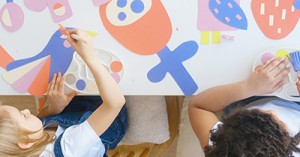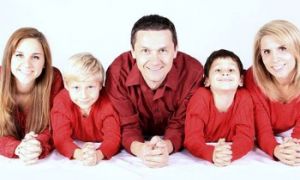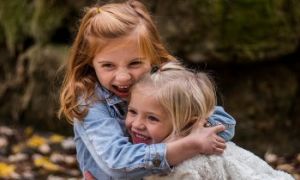The following is a concise yet powerful cheat sheet for Quality Area 1: Educational Program and Practice, tailored for your advocacy and sector leadership lens. This distills the core elements, documentation strategies, and reflective prompts to support both compliance and authentic pedagogy.
Key Elements & Tips
| Element | Description | Practice Tips |
|---|---|---|
| 1.1.1 Approved Learning Framework | Program aligns with EYLF/VEYLDF | Embed learning outcomes in planning and documentation |
| 1.1.2 Child-Centred | Program reflects children’s strengths, interests, and needs | Use “All About Me” profiles, family input, and child voice quotes |
| 1.1.3 Program Learning Cycle | Planning, implementation, evaluation | Show cycles of learning with annotated observations and follow-ups |
| 1.2.1 Intentional Teaching | Educators actively guide learning | Use provocations, open-ended questions, and scaffolded challenges |
| 1.2.2 Responsive Teaching | Educators respond to children’s cues | Document spontaneous moments and educator responses |
| 1.3.1 Assessment & Planning | Individual learning is assessed and planned | Maintain learning portfolios, milestone tracking, and goal setting |
| 1.3.2 Critical Reflection | Educators reflect on practice to improve | Use weekly/monthly reflection templates with guiding questions |
Documentation Hacks
- Create folders for each child with annotated learning stories
- Use visual planning walls or digital platforms to show learning cycles
- Embed reflective prompts in team meetings and planning sessions
- Include photos with captions that link to learning outcomes
Reflective Prompts
- “How did this experience support child agency?”
- “What learning theories underpin this approach?”
- “What changes did we make based on child/family feedback?”
- “How do we ensure equity and inclusion in our program?”
Regulatory Foundations (National Law & Regulations)
| Regulation | Requirement | Practical Implication |
|---|---|---|
| Reg 73 | Educational program must contribute to the five learning outcomes of the approved learning framework | Align planning with EYLF outcomes; show intentional links in documentation |
| Reg 74 | Document child assessments and evaluations | Capture developmental needs, interests, experiences, and progress toward outcomes |
| Reg 75 | Display and make program accessible to families | Use visual displays, newsletters, or digital platforms to share program content |
| Reg 76 | Provide families with documentation on request | Maintain organized, accessible records of each child’s learning journey |
Pedagogical Depth: What High-Quality Practice Looks Like
Curriculum Decision-Making (1.1.1)
- Builds identity, community connection, well-being, confidence, and communication
- Example: Use rhyme, rhythm, and home languages to enrich literacy and belonging
Child-Centred Practice (1.1.2)
- Reflects children’s strengths, ideas, culture, and interests
- Example: Co-construct learning goals with children and families
Learning Cycle (1.1.3)
- Plan → Implement → Evaluate → Reflect
- Example: Use annotated observations and follow-up experiences to show progression
Intentional Teaching (1.2.1)
- Educators actively guide and scaffold learning
- Example: Pose open-ended questions, introduce provocations, and extend inquiry
Responsive Teaching (1.2.2)
- Educators adapt to children’s cues and emerging interests
- Example: Document spontaneous learning moments and educator responses
Assessment & Planning (1.3.1)
- Individual learning is assessed and informs planning
- Example: Use milestone tracking, goal setting, and child voice quotes
Critical Reflection (1.3.2)
- Educators reflect on practice to improve outcomes
- Example: Embed reflective prompts in team meetings and planning cycles
Documentation That Works (Without Burnout)
- Visual Evidence: Use annotated photos with learning outcome links
- Child Portfolios: Include learning stories, reflections, and goal tracking
- Planning Walls: Make learning visible for families and educators
- Team Reflections: Use shared prompts to drive pedagogical growth
- Child Voice: Capture quotes, drawings, and co-authored documentation
Empowerment Prompts for Educators
- “How did this experience support child agency and voice?”
- “What theories or frameworks underpin this decision?”
- “How do we ensure equity and inclusion in our program?”
- “What feedback from families has shaped our planning?”
Further Reading
How To Achieve Quality Area 1
Exceeding Guidance For Quality Area 1
Reflection Questions For Quality Area 1
Practical Examples Of NQS Quality Area 1
Understanding Quality Areas
Documentation Services Required to Support Quality Area 1
Key Terms From Quality Area 1







 Here is the list of the EYLF Learning Outcomes that you can use as a guide or reference for your documentation and planning. The EYLF
Here is the list of the EYLF Learning Outcomes that you can use as a guide or reference for your documentation and planning. The EYLF The EYLF is a guide which consists of Principles, Practices and 5 main Learning Outcomes along with each of their sub outcomes, based on identity,
The EYLF is a guide which consists of Principles, Practices and 5 main Learning Outcomes along with each of their sub outcomes, based on identity, This is a guide on How to Write a Learning Story. It provides information on What Is A Learning Story, Writing A Learning Story, Sample
This is a guide on How to Write a Learning Story. It provides information on What Is A Learning Story, Writing A Learning Story, Sample One of the most important types of documentation methods that educators needs to be familiar with are “observations”. Observations are crucial for all early childhood
One of the most important types of documentation methods that educators needs to be familiar with are “observations”. Observations are crucial for all early childhood To support children achieve learning outcomes from the EYLF Framework, the following list gives educators examples of how to promote children's learning in each individual
To support children achieve learning outcomes from the EYLF Framework, the following list gives educators examples of how to promote children's learning in each individual Reflective practice is learning from everyday situations and issues and concerns that arise which form part of our daily routine while working in an early
Reflective practice is learning from everyday situations and issues and concerns that arise which form part of our daily routine while working in an early Within Australia, Programming and Planning is reflected and supported by the Early Years Learning Framework. Educators within early childhood settings, use the EYLF to guide
Within Australia, Programming and Planning is reflected and supported by the Early Years Learning Framework. Educators within early childhood settings, use the EYLF to guide When observing children, it's important that we use a range of different observation methods from running records, learning stories to photographs and work samples. Using
When observing children, it's important that we use a range of different observation methods from running records, learning stories to photographs and work samples. Using This is a guide for educators on what to observe under each sub learning outcome from the EYLF Framework, when a child is engaged in
This is a guide for educators on what to observe under each sub learning outcome from the EYLF Framework, when a child is engaged in The Early Years Learning Framework describes the curriculum as “all the interactions, experiences, activities, routines and events, planned and unplanned, that occur in an environment
The Early Years Learning Framework describes the curriculum as “all the interactions, experiences, activities, routines and events, planned and unplanned, that occur in an environment


